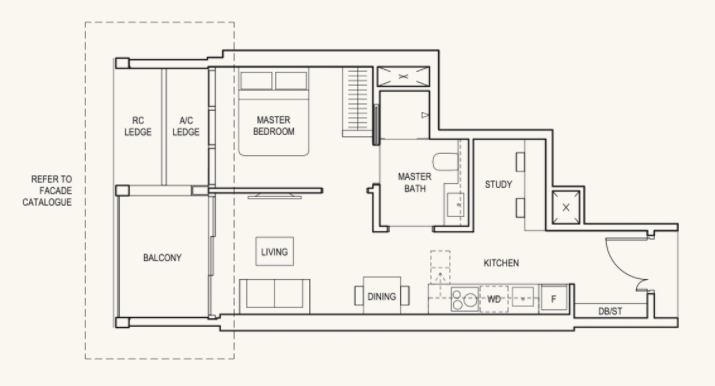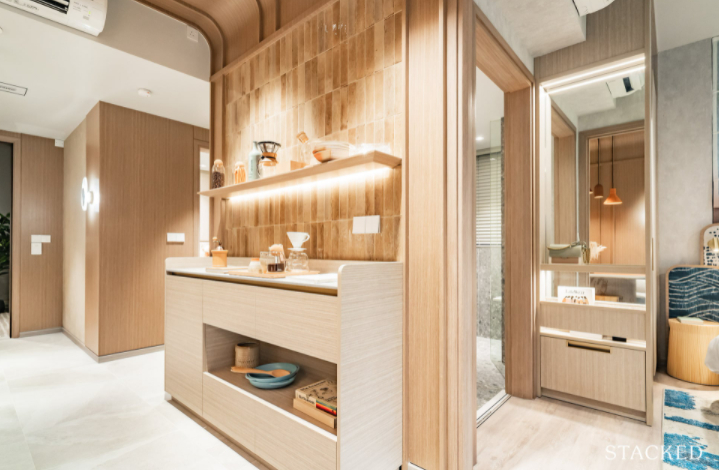7 easy hacks to save on rental rates in 2022

As we mentioned in a previous article, rental rates are at a six-year high, and are still likely to increase. 2022 is proving kind to landlords, but not so much to tenants.
In this environment, tenants need to do everything they can to lock in better rates, and keep their costs down – especially since construction delays may cause a longer wait for your new home:
As an example, consider the average rental rate of condos near Paya Lebar MRT, versus Aljunied and Eunos MRT stations.
Aljunied and Eunos are both one stop away from Paya Lebar. However, the difference is that Paya Lebar Quarter (PLQ) is a major commercial hub, whereas the other two are not:

Two-bedder Condos, within one kilometre of Paya Lebar MRT, have average rental rates of $3.78 psf.
Condos within one kilometre of Eunos and Aljunied MRT average $3.49 psf. For a 700 sq ft unit, this is a difference of $203 per month. Rather substantial savings, for the minor inconvenience of travelling one stop!
Do bear in mind though, that a “one-stop” distance varies between stations. The distance between Bras Basah and Dhoby Ghaut MRT, as well as Eunos and Paya Lebar, are under three minutes; the distance between Yishun or Yio Chu Kang to Khatib can be twice as long. So you may want to ride the train and get a sense of the distance first.
Shoebox units tend to be around 470 to 530 sq ft. This is a difference of 60 sq ft. As a point of reference, the typical bedroom size – in an HDB flat – is about 125 sq ft.

On a practical basis, most tenants will not feel a huge difference due to those 60 sq ft. Or as some tenants have explained to us: “One bedroom is still one-bedroom, even if it’s the biggest layout.”
Assuming a rental rate of $3.50 psf, however, that 60 sq ft. could mean an added $210 per month. So really ask yourself if that little bit of extra space is going to make all the difference.
A fully furnished unit does tend to cost a bit more. Even if doesn’t, watch out for a potential hidden cost: the more stuff is on the inventory list, the higher the odds of breaking something, and losing some of your security deposit.

Tenants who are staying for the short term should go for fully-furnished units, as it’s more practical than buying your own furniture.
But if you’re renting as a family, and intending to stay on for several years, unfurnished makes more sense: not only can it be cheaper, you have more options to customise the place to your needs.
For Singaporeans who are waiting on a new home, an unfurnished unit provides space to store your bulky items. It’s cheaper to lug your big screen TV, antique desk, wardrobe, etc., into a vacant rental unit, than to pay both rent and storage costs at a warehouse.
It’s not as crazy as it sounds: some sellers can negotiate to stay past the vacant possession date, and pay rent to your buyer. This has the added benefit of ensuring that you only need to move once and that you won’t face storage costs.
If you know the buyer is in no particular hurry or intends to rent the unit anyway, they may be happy to take you on (you’re less of a risk than a new, unknown tenant).
It’s sometimes possible to negotiate this as part of your sale as well (e.g., lower the sale price, in return for being able to stay longer).
In this case, you should compare the size of the discount you’re giving, to the cost of temporary accommodation and storage.
If you’re selling through a property agent, you can ask them to help you negotiate this as well.
If you’re single, this is probably the easiest way to make rentals affordable. Team up with a colleague, classmate, buddy, etc., and go for a two-bedder instead of a shoebox unit.

Again, going with a typical rental rate of $3.50 psf, a 500 sq ft. shoebox costs about $1,750 per month. A two-bedder at 700 sq ft. is around $2,450 per month – but split between two tenants, that’s $1,225 each.
Just make sure, however, that you’re taking on a roommate you can live with; and also someone who is reliable with paying rent (otherwise, you may find yourself evicted along with them).
In case your landlord doesn’t know it, here’s the link to IRAS that explains it.
This is especially important if you’re renting with multiple, unrelated tenants. If you’re renting with fellow students, for example, it may not be the best idea to split the utility bill equally. It could be quite unfair later, if one tenant is a power guzzler who keeps the air-conditioner on in the living room past midnight, while another is barely home.
Likewise, some tenants do more laundry than others or may cook while others don’t.
Try to convince the landlord to cover these costs on their end, and claim them as tax deductions. Note that this is not the default arrangement in the commonly used Tenancy Agreement (TA) template:
“The Tenant agrees to pay all charges for the supply of water, electricity, gas, any water borne sewerage system, and any such utilities installations installed or used at the said Premises, including any tax payable thereon such as Goods and Services Tax (“GST”)”
This isn’t just about your comfort. Again, from the typical template TA:
“The Tenant shall take up a service contract with a qualified air-conditioning contractor to service and maintain the air-conditioning units installed at the Premises, at least once every three (3) months at the expense of the Tenant and keep them in a good and tenantable repair and condition including the topping up of gas (if necessary), throughout the Term.”

Unless you can negotiate that clause out of the TA, we’d be careful to avoid units with creaky, old air-conditioners. Very old air-con units can leak and run out of gas with ridiculous frequency, and you could end up saddled with expensive quarterly bills.
Landlords may be willing to charge a little less if you sign a longer lease (e.g., two years instead of a year).
This can be a bit painful sometimes, such as if you find out other units in the same development are cheaper, a year down the road.
Given the current environment, however, there’s a higher risk of rental rates going up rather than down. Those who secured a 2-year lease before/during the pandemic would be happy campers now, those who are looking to renew during this period will probably look back with remorse.
Some landlords are also willing to lower the rent if you’re willing to pay two or three months’ rent upfront.
This article was first published in Stackedhomes.